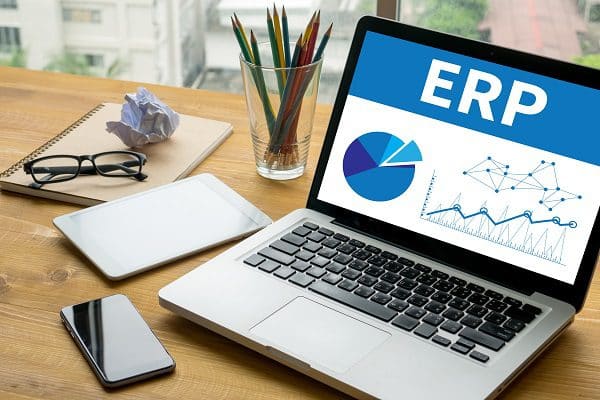Almost all companies have an ERP system to manage all the flows associated with their business. All ERP systems are designed, organised and structured according to the MRP (manufacturing resources planning) model. Its purpose is to manage all the company's data. Hence the emergence of new, dedicated professions. In what way is data forecasting a key element for the company? To what extent does a company's performance depend on the level of performance of its MRP? Stéphane Chambard, supply chain and industrial performance trainer, explains.

Before the 90s, companies had IT systems (computer-aided production management software, sales management, logistics, etc.) designed to ensure the performance of a particular sector of the business. The result was a multiplicity of information systems within the same company, and hence problems communicating this information between different sectors.
Hence the advent of Enterprise Resource Planning (ERP) systems in the 1990s to centralise all the company's day-to-day activities, such as accounting, human resources, production operations and logistics.
ERP, the brain of the company
"Companies have integrated ERP to facilitate information management". This ERP tool, which has since been rapidly adopted, is essential for managing a company. It provides the company with a a single source of reliable information. Because the whole point of this system is to predict what you're going to sell. "The sinews of war are forecasting".
All these IT systems are based on the MRP model. A component requirements planning model based on sales forecasts, which has also undergone a number of changes, culminating in the MRP model as we know it today.
|
Developments in MRP The MRP2 system, developed in the early 1980s, is the modernised version of MRP. How much to produce and when... MRP2 goes further: it also defines the appropriate resources, quantity and time to carry out production. In other words, it is an adaptation of MRP that takes into account human resources and material requirements. The main advantage? Planning that takes into account the plant's load/capacity balance, proposing finite-capacity scheduling, calculating costs and accurately monitoring production. |
Meeting customer requirements
Companies need to be flexible and responsive. They need to be able to respond to customer requirements, and thus gain a competitive advantage. And customer requirements The company is adapting to its customers' requirements in an increasingly unstable world. "The company is adapting to the demands of its customers in an increasingly unstable world.
ERP is designed to provide solutions for supply, storage, production and distribution. The purpose of this tool is to manage all the company's data - it's the brain.
|
Service rates Customer satisfaction is measured in terms of service levels. If these four criteria are met, the measure reaches 100%. A company's operational performance is based on this service rate. For industry, the level of requirement is very high, generally 95%, hence the importance of forecast reliability. For other sectors, such as the automotive and aerospace industries, the figure is around 99%. |
What about customer requirements in terms of price? The challenge for companies is to control the costs inherent in products, to obtain optimum results at the lowest possible cost. This is the objective of lean manufacturing.
ERP-integrated tools to boost performance
Some of the best-known enterprise resource planning (ERP) software packages include SAP and Oracle. One in two companies uses them. ERP can be linked to other software packagesThis is all the more important when one of the company's activities, such as purchasing, planning, logistics or transport, becomes strategic.
These tools feed into the entire planning system, right through to the operational level, in other words the entire production chain. The aim is to provide a link between the data extracted from the internal database and the information gathered from all the company's internal and external departments. The result is guaranteed performance gains for the company. Tools include :
- SRM (supplier relationship management): this is software for managing supplier relationships. "It's interesting to develop this tool.
- SCM (supply chain management): software for managing the supply chain
- The WMS (warehouse management system): this is software designed to optimise stock management in warehouses and shops.
- APS (advanced planning and scheduling): this is advanced planning software.
"If the activity is strategic, it is necessary to put in place the software(s) to meet it".
"The result is a more efficient and cost-effective business". These savings can then be (re)invested in this type of software.
These tools are constantly evolving to meet the need for greater responsiveness. This is particularly true of advanced planning software (APS). Companies are relying on new analysis tools based on new, easier-to-use technologies. "The digitisation of tools has opened up a whole new range of possibilities, and is also contributing to business performance. The vast majority of ERP systems now use high-performance touch-screen tablets. This should facilitate the work of the new supply chain players identified as such, the forecasters.
Production management, a changing profession
"Nobody discovered the structure of the MRP. There are no major changes. It's the jobs around MRP that are changing.
The company needs to equip itself with high-performance forecasting tools that enable players to react quickly. These tools help to make data more reliable. The aim is to be able to analyse a mass of data from the company's entire ecosystem and rapidly adapt its forecasts in a constantly changing environment.
Hence the initiative taken by large companies to recruit people from outside the company who are solely dedicated to processing reliable data... or from within the company. These people, identified as such within their company, have migrated to these functions. In the past, these were ancillary tasks assigned according to the way the company was organised.
For example, over the last five years, companies have been developing demand planner or forecasters. "This is good news, although it is still very surprising that a number of companies did not question the reliability of the data earlier".
At the heart of the supply chain
In terms of training, forecasters come from business or engineering schools, or hold a Master's degree specialising in logistics, supply chain, industrial management or international trade. Two to five years' experience in the supply chain is generally required. They must also be familiar with management software packages, office tools (advanced Excel), database management software (Access, SAS, etc.) and MRP2 methods.
Reporting to the Supply Chain Departmentforecasters are responsible forprovide the IT system with the most reliable forecasts possible. The aim is to optimise production, supply and stock management processes, in order to reduce supply chain costs and guarantee product availability. Forecasters work closely with the sales, marketing, production and finance departments.
Forecasters are at the origin of the forecasting process and the implementation of logistics optimisation, so they occupy an increasingly strategic central position within companies. Hence the need for training organisations to design courses dedicated to this profession of the future.





